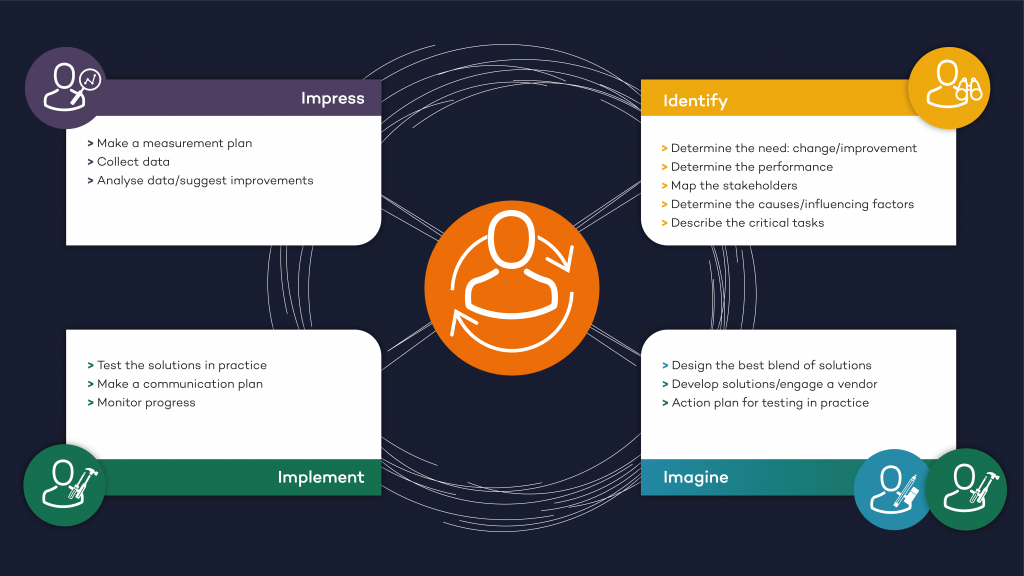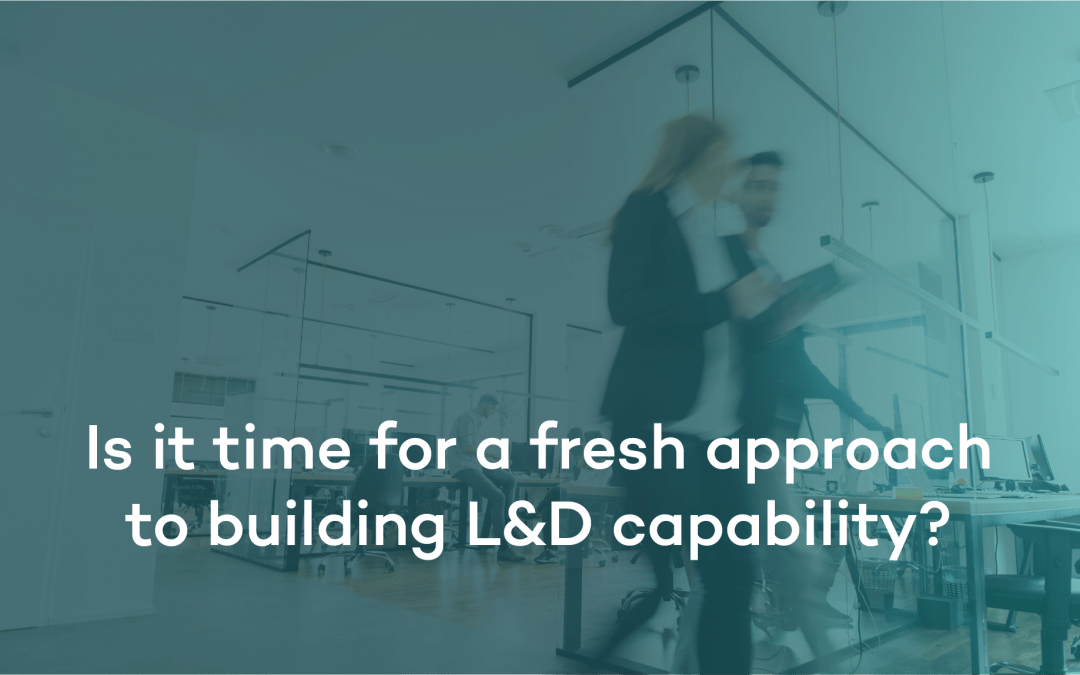By Laura Overton
On the 11th of August 80+ learning leaders from around the globe joined Laura Overton, Vivian Heijnen and Charles Jennings to discuss fresh approaches to building L&D capability. The far reaching discussion was captured in the recording below but if your time is tight – here are some of the key ideas discussed.
Is it time for a fresh approach to building L&D capability? In a nutshell – yes! And this is why:
L&D is falling short of our true potential
Our belief at Tulser is that L&D can and should add critical business value to our organisations. Independent benchmark research over the years has flagged that L&D is hungry to add true value in terms of performance improvement, speed to market, customer satisfaction, growth revenue and organisational agility but have been consistently struggling to deliver.
A focus on L&D knowledge and skills alone is not enough
The industry has mapped the types of capability and skills that we need to achieve results. We are inundated with a wide range of opportunities to improve our knowledge about what to change and why change is needed. However, the abundance of knowledge is not always helpful (the illusion of knowing can even be detrimental). As an L&D community we like to talk about the new skills we need to deliver performance. However, evidence shows that few feel confident even after years of debate. It is clearly time for a new approach.
For us, building new capabilities for L&D is based on the following five roles: Performance Detective, Performance Architect, Performance Master Builder, Performance Game Changer and the Performance Tracker.[1]
Capability is part of systemic change needed to drive business value
‘L&D capability is not about developing skills, it’s about delivering business results.’ – Charles Jennings
When we look at the 4 archetypes of L&D business models (Jos Arets) we see that L&D is mostly operating in the order taker/learning enabler business models, scratching the surface of the value that we can bring. The future lies in shifting our business model to performance enablers and value creators. L&D Capability is one part of a bigger picture needed to shift our business models. Creating value is not just about the best platforms we need to look at the whole of the L&D business model, we need to consider a systemic process of change in order to deliver real value.[2]
We need to focus on the process, not the individual competencies
For L&D to deliver value, we need a process to understand the business problem. What are the business objectives, the performance objectives, the environmental factors contributing to the problem and then work to solve that problem?
For L&D to deliver value we need to be able to understand what people need to perform in an organisation – what are the critical tasks and situations where people are finding it difficult to perform in their place of work?
If we are to do that for others, we need to be able to do that for ourselves.
Components of a structured process for problem solving
‘Pit a good employee against a bad system and the system will win most every time.’ Geary Rummler
Tulser has been working through this process for many years in its work with the 70:20:10 Institute. We discussed a number of factors that feed into the methodology (Identify, Imagine, Implement and Impress) . The aim is to support and build L&D capability in the flow of our own work.

The 4-I Model. For further information about this model, please go to Vivian’s description at 31:32 in the recording, which you can find at the bottom of this page.
- Start with the end in mind – what are we looking to improve? How will we know when this has improved? This is always done in collaboration with business not in isolation.
- Focus on critical tasks (not competencies) – the language of critical tasks is the language that business understands if you want the business to work with you to improve performance.
- Establish a common method and vocabulary across stakeholders- one based in the language and disciplines of business.
- Cross-discipline – delivering value means working with other disciplines e.g. OD and Lean teams may already collect data essential for driving value, use it to stay critical and co-create value together.
- End to end process – Identify and Impress stages both start and finish in the workflow.
Learning interventions are not always needed, but where they are they should use the outcomes of the identify phase within an evidence informed model of learning design. (Tulser uses the 4C/ID model (Jeroen van Merriënboer & Paul Kirschner) in our own design of our Expert programme).[3]
Proven business results
The method applied delivers consistent business results as it targets specific business problems![4]
It does not have to take time.
‘We have used this approach to deliver something different in a crisis where we only have a couple of days to think about things, crisis brings need, speed and resources to get things done!’ Vivian Heijnen
Contact us if you’d like to know more about our Expert Programme!
_______________________________________
Resources:
Additional reading:
[1] Arets, J.,Jennings, C. & V. Heijnen (2015). 70:20:10 Towards 100% performance. Maastricht: Sutler Media B.V. [2] Arets, J. et al (in press). Unbox L&D – Towards Value-Based L&D Business Models. Maastricht, London: Tulser. [3] Merriënboer van, J. G. & Kirschner A., P. (2017). Ten steps to complex learning. Leiden: Taylor & Francis LTD. [4] Example of impact shared in the session: Hilti
